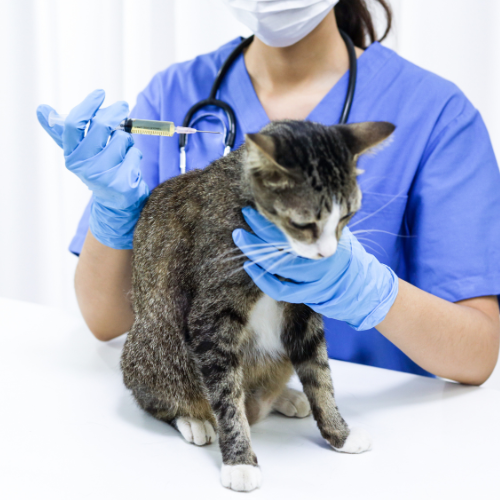
The Lifecycle of Common Cat Worms and Why It Matters
Hey there, cat parents! Today, we're tackling a topic that might make some of us a bit squeamish but is super important for the health of our furry friends: the lifecycle of common cat worms. Understanding the nitty-gritty of how these pesky parasites operate can be a game-changer in effectively treating and preventing infestations. So, let's dive in and demystify the world of cat worms together!
Roundworms: The Unwelcome Spaghetti
First on the list are roundworms, the most common intestinal parasites in cats. They look a bit like spaghetti (sorry, pasta lovers) and can cause a range of symptoms from none at all to severe health issues, especially in kittens.
Lifecycle Lowdown: Roundworms start their journey as eggs, which are ingested by your cat from the environment, possibly through contaminated soil, feces, or even by eating infected rodents. Once inside your cat, these eggs hatch into larvae, which then migrate through the body, eventually settling in the intestines to mature into adults. Adult roundworms lay eggs, which are passed out in your cat's feces, and the cycle begins anew.
Tapeworms: The Segmented Sneaks
Tapeworms are another common visitor to our cats' insides, recognizable by their long, flat, segmented bodies. These critters can cause weight loss and itching around the rear end.
Lifecycle Lowdown: Tapeworms are a bit more complex, relying on an intermediate host (usually a flea) to complete their lifecycle. It starts when flea larvae eat tapeworm eggs from the environment. Your cat then ingests the infected flea while grooming. Once inside your cat, the tapeworm larvae develop into adults, attach to the intestinal wall, and start producing segments full of eggs, which are passed out in the feces.
Hookworms: The Tiny Terrors
Hookworms are smaller than roundworms and tapeworms but don't let their size fool you. They're bloodsuckers, which can lead to anemia in your cat, particularly dangerous for kittens.
Lifecycle Lowdown: Like roundworms, hookworms lay eggs that are passed in the feces into the environment. These eggs hatch into larvae, which can then infect your cat either through ingestion or by penetrating the skin directly. Once inside, they migrate to the intestines, latch on, and start feeding, growing, and laying more eggs.
Why Understanding This Lifecycle Matters
So, why get into the weeds with all this lifecycle talk? Well, it's not just to give you the heebie-jeebies. Understanding these cycles is crucial because it highlights the importance of not only treating our cats but also taking preventive measures in our homes and surroundings.
- Prevention is Key: Regular deworming, based on your vet's recommendations, can help interrupt these cycles, especially important for outdoor cats or those in multi-pet households.
- Environmental Clean-Up: Keeping your cat's environment clean—think regular litter box maintenance and keeping your home flea-free—can reduce the risk of infection and re-infection.
- Breaking the Cycle: Knowing that fleas can carry tapeworms, for example, underscores the importance of flea control in worm prevention. Similarly, understanding that hookworms can penetrate skin teaches us the value of protective footwear for humans in areas where pets do their business.
Wrapping Up
In the grand scheme of cat parenting, a little knowledge goes a long way. By understanding the lifecycles of these common parasites, we can take targeted steps to protect our beloved felines (and ourselves) from their unwelcome presence. Regular vet check-ups, preventative treatments, and a clean environment are your best weapons in this ongoing battle. Here's to happy, healthy, worm-free kitties!


